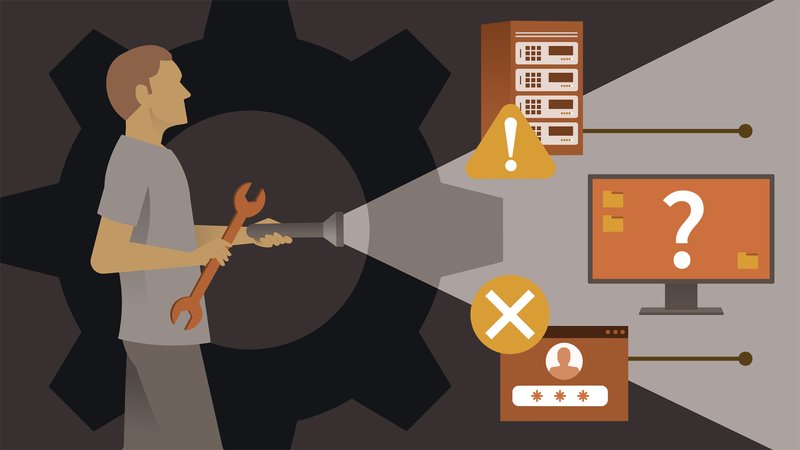
Kick plates, also called toe panels, might seem insignificant, but they actually play a key role. They help protect the appliance’s internal parts, keep dust and debris from sneaking underneath, and finish off the look of your kitchen. When one gets loose, rattles, or feels floppy, it’s tempting to ignore it, but the fix is usually quick and will help save you from larger issues down the road. Here’s the thing: whether you have a Bosch dishwasher, a GE fridge, or another brand entirely, the troubleshooting steps are pretty similar.
Let’s break down why your kick plate might be causing a racket, what to check, and—most importantly—how to get it back to normal. No contractor required. Just a few tools, a bit of patience, and a willingness to get down on the floor for a few minutes.
What Is a Kick Plate and Why Do They Get Loose?
First, let’s get clear on what we’re dealing with. A kick plate is that panel that runs horizontally along the bottom of appliances like dishwashers, refrigerators, and some ovens. Think of it as the appliance’s shin guard—it keeps dirt, pet hair, and the odd runaway Cheerio from sliding underneath, and also hides some of the inner workings from view.
Now, you might be wondering: why do these things get loose or start rattling in the first place? Well, there are a few culprits:
- Vibration: Appliances vibrate, especially when running. Over time, those tiny shakes can nudge screws loose or wiggle the plate out of position.
- Improper Installation: Sometimes, the kick plate wasn’t attached tightly to begin with, or the wrong hardware was used (think mismatched screws or missing brackets).
- Wear and Tear: If you’ve ever accidentally kicked the plate while mopping or vacuuming, you know how easy it is to knock it loose. Small impacts add up.
- Missing or Damaged Clips: Many modern appliances use plastic clips or tabs to hold the plate in place. Those can crack or fall out, especially on older units.
So, if your kick plate is rattling, it’s not your fault—or your dog’s. It’s just a weak spot in the design, waiting for a little attention.
Signs Your Kick Plate Needs Troubleshooting
You might be thinking, “Isn’t a little rattle harmless?” Sometimes, sure. But other times, that noise is a warning bell. Here are the most common signs that your kick plate needs a closer look:
- Rattling or Vibrating Sounds: This is the classic symptom—especially when the appliance is running or when you walk nearby.
- Loose or Dangling Plate: If the panel moves easily with a gentle nudge, it’s too loose. You might even see a visible gap at the top or corners.
- Difficulty Opening Doors: Sometimes, a misaligned kick plate can catch on the appliance door or cabinet, making it hard to open or close things smoothly.
- Visible Hardware: Missing, crooked, or rusty screws are a giveaway that something’s not right.
Honestly, it’s smart to fix these issues quickly. A loose kick plate can let in dust, collect debris, and even become a tripping hazard. Worst case, it could get damaged and cost more to replace if it gets yanked off completely.
Step-by-Step: How To Fix a Loose or Rattling Kick Plate
Let me explain how to get your kick plate back in shape. This guide works for most major brands—Bosch, GE, Whirlpool, Samsung, you name it. The process is simple, but take your time and don’t rush through any steps.
1. Gather Your Tools
You don’t need a contractor’s toolbox for this job—just some basics:
- Phillips or flathead screwdriver (depends on your hardware type)
- Small adjustable wrench (handy if you find bolts)
- Replacement clips or screws (if any are missing or stripped)
- Flashlight (because it always seems darker under there than you expect)
2. Power Off the Appliance (If Needed)
If you’re working on a dishwasher or anything electrical, play it safe. Unplug it, or turn off the circuit breaker to avoid any chance of a shock.
3. Remove the Kick Plate
Most kick plates are held by 2–4 screws along the top or bottom edge. Some pop off with clips. Check your brand’s manual if you can, but in most cases:
- Remove the screws or gently pry the panel away from its clips.
- Set the hardware aside somewhere safe—you’ll need it again.
If any screws spin endlessly, they may be stripped; you might need pliers to pull them out.
4. Inspect for Damage or Missing Parts
Check the kick plate and the mounting points on your appliance. Look for:
- Cracked or missing clips
- Stripped screw holes
- Bent or rusty brackets
Honestly, you’d be surprised how often a single cracked clip is the whole problem.
5. Tighten or Replace Hardware
If everything’s in good shape, just reinstall the kick plate and tighten the screws evenly. If you found anything broken, now’s the time to swap it out. Home improvement stores often carry generic clips, or you can order appliance-specific parts online.
6. Test and Listen
Give the plate a gentle tap—no rattle? Run the appliance for a minute and listen for vibration. If the noise is gone, you’re all set. If not, double-check that all screws are tight and the plate is flush with the floor.
How Kick Plate Troubleshooting Differs by Appliance Type
Every appliance brand has its quirks, and the process can look a little different from a Bosch dishwasher to a Whirlpool fridge. Here’s what you might notice depending on what you’re working with.
- Dishwashers: These usually have kick plates that are a little wider, sometimes with insulation or a noise-dampening strip behind them. You might need to fully open the dishwasher door to access the screws.
- Refrigerators: Fridge kick plates are often just snapped into place with plastic tabs. In some Samsung and GE models, the plate also covers access to coils or the water filter, so be careful not to damage anything behind it.
- Ovens: Some ranges have metal toe panels with brackets that must line up perfectly—the screws may be hidden underneath or to the sides.
If you have a universal appliance, or you’re swapping kick plates between brands, always double-check that the size and mounting system match. Otherwise, you might end up with a rattle that just won’t quit.
Preventing Kick Plate Issues in the Future
If you’re not a fan of fixing the same problem twice (who is?), these simple habits can help your kick plate stay quiet and secure:
- Check screws and clips every few months—a quick turn with a screwdriver is all it takes.
- Be careful while cleaning—avoid bumping the panel with your mop, vacuum, or feet.
- Keep an eye on kids and pets—small hands and paws love pushing or poking at low panels.
- Replace hardware as soon as it shows rust or wear—don’t wait for it to fall off.
It’s a five-minute check that can save you a headache later. And if you ever hear a new rattle, don’t ignore it—it’s often easiest to reset or tighten something before it gets worse.
When to Call a Professional for Kick Plate Troubleshooting
Most of the time, fixing a loose kick plate is a DIY project you can tackle in under thirty minutes. Still, there are situations where it makes sense to call for backup. Here’s when to put down the screwdriver:
- Electrical concerns: If your appliance has wiring, water lines, or other connections hidden behind the kick plate, it’s smart to get help—especially if anything looks frayed or wet.
- Repeated problems: If you fix the plate but it keeps coming loose, there may be a bigger problem with how the appliance sits (leveling feet, for example) or how it’s installed.
- Missing or unique parts: Some high-end or older models use specialized clips or custom hardware that aren’t easy to replace at the hardware store.
Never force anything—if a kick plate feels stuck, or you hear odd sounds while reattaching it, stop and make sure nothing is blocking the way. It’s always better to ask for help than break something out of frustration.
Comparing Universal vs. Brand-Specific Kick Plate Repairs
You might be tempted to grab a universal replacement if your kick plate is beyond saving. Here’s the deal: universal panels can work, but they’re not always a perfect fit. Let’s compare:
- Universal Kick Plates: These are designed to fit a range of appliances and often come with a variety of mounting options. They’re affordable and easy to find but can look noticeably different from the original, both in color and thickness.
- Brand-Specific Kick Plates: Original parts from brands like Bosch, GE, or Whirlpool are made for your appliance’s exact model. They cost a bit more but guarantee a snug fit and matching look.
If looks matter to you (or if your appliance is visible from across the room), brand-specific is best. For older or hidden fridges and dishwashers, universal options probably won’t bother anyone.
Pro tip: If you’re ever unsure about the part you need, snap a photo of your appliance’s model sticker before heading to the hardware store or searching online. It’ll save you from guesswork and returns.
Kick Plates and Appliance Performance: Why Fixing Rattles Matters
You might be tempted to ignore a minor rattle, but a loose kick plate is more than just a cosmetic issue—it can actually affect how your appliance runs. Dust and debris can sneak below and clog up crucial parts, especially in fridges and dishwashers. Over time, this can mess with cooling coils, fans, or even water lines.
Plus, that rattling is a sign that something’s moving—if it gets much looser, the kick plate could fall off entirely (and leave sharp edges or exposed wires behind). It’s a small fix that protects your investment and helps everything stay working—and sounding—like it should.
Wrapping Up: Keeping Your Kitchen Quiet and Tidy
Troubleshooting a loose or rattling kick plate doesn’t need to be intimidating. Whether you’re working on a trusty Whirlpool, a sleek Bosch, or anything in between, the process is mostly about tightening, replacing, or resetting a few small parts. With a little bit of attention, you can quiet that annoying rattle and keep your appliance looking sharp.
Remember, a kick plate isn’t just there for show—it shields your appliance’s vital parts and keeps your kitchen a little cleaner. By dealing with minor issues now, you’ll avoid bigger headaches (or bigger repair bills) later. So next time you hear that telltale rattle, don’t just turn up the TV—grab a screwdriver, and give your kick plate some quick troubleshooting attention. Your ears—and your kitchen—will thank you.
